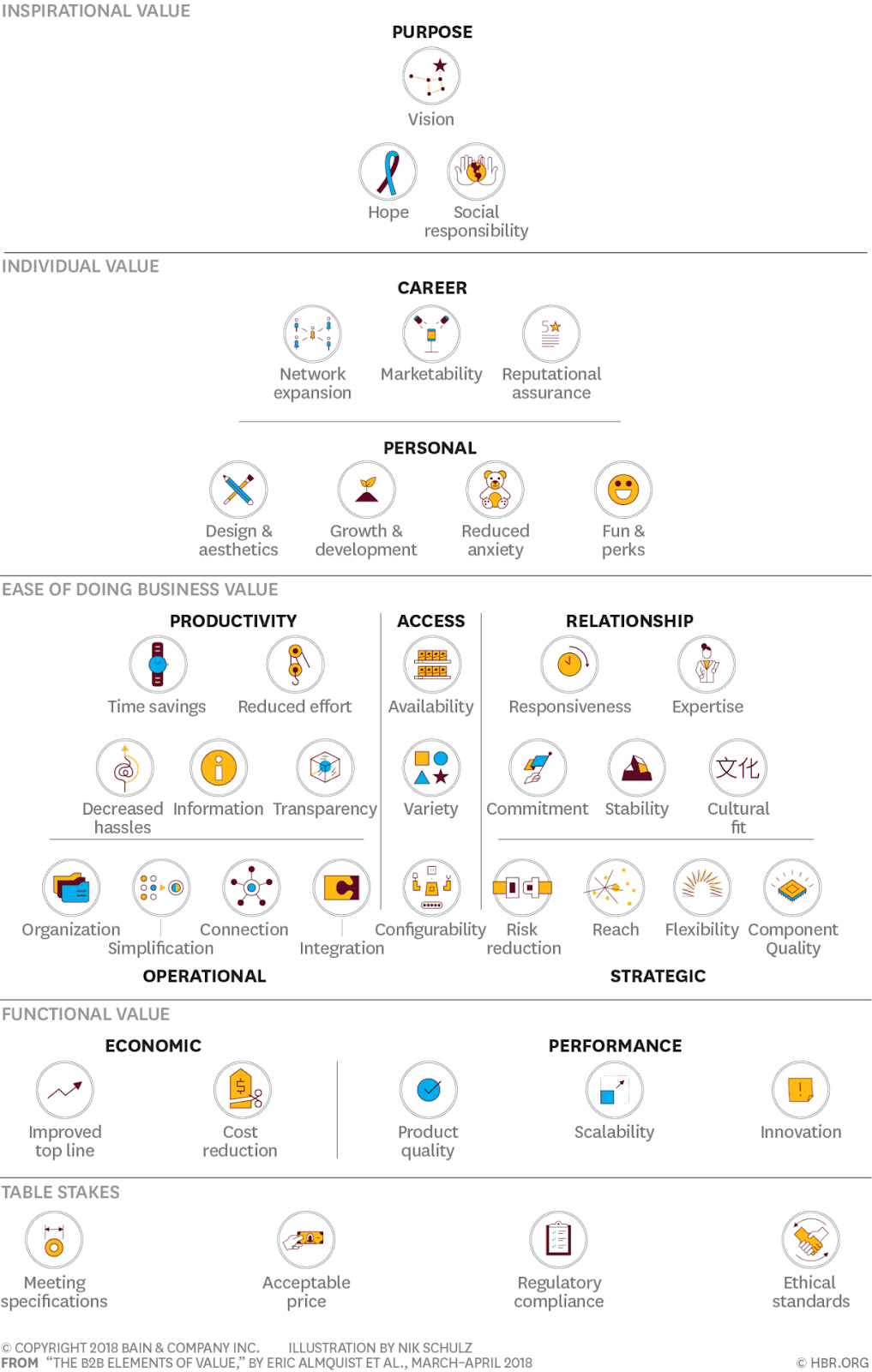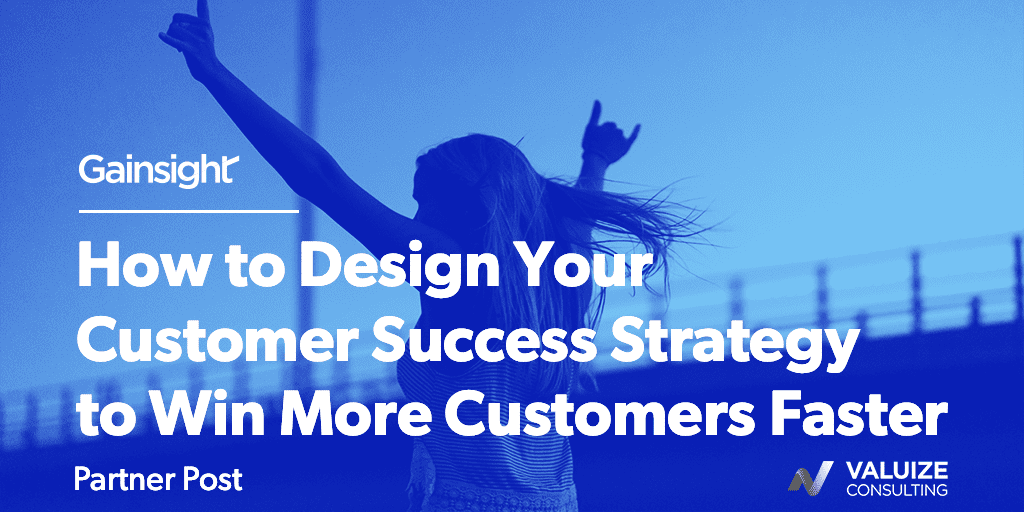As a B2B SaaS company, your customer success strategy can be your best sales strategy.
And I don’t just mean for expanding customers through upsells and cross-sells (farming).
I mean for acquiring net-new customers. I’m talking about hunting. Your customer success strategy can be your best customer acquisition strategy.
Here’s how I measure “best customer acquisition strategy” in this context:
- Win Percentage
- Optimum Deal Size (dollars paid up front)
- Speed of Sale
…AND:
- Time to First Value (post-sale)
Many B2B SaaS companies suffer from too many competitive losses, heavily discounted quotes, and no-decisions during net-new sales cycles.
These weaknesses are often compounded by a failure to consistently, quickly, and efficiently get the customers that are acquired to First Value as part of onboarding.
If this is your company, you’re not alone. This is endemic in B2B SaaS companies today.
The cure lies in the design and application of your customer success strategy.
When your customer success strategy is designed and applied correctly to the customer acquisition phase of your customer lifecycle, you will win bigger deals with more customers faster—all while ensuring these new customers can achieve First Value quickly during onboarding.
Allow me to explain why this is the case and how to make it happen.
I’ll start by predicting that one or more of the conditions below applies to your B2B SaaS company.
Your B2B SaaS Product Is a Commodity
In the vast majority of B2B SaaS market categories, your product functionality, machine learning algorithms, and a plethora of “out-of-the-box” APIs are now commodities. They’re no longer differentiators.
The cost and technology barriers to integrating the latest and greatest technological innovations into a B2B SaaS product are declining rapidly. This is thanks to offerings from the likes of Microsoft, Amazon Web Services, and Google that provide these previously cutting-edge capabilities as pre-built services.
The expertise and financial investment needed to integrate these capabilities into a B2B SaaS product is falling rapidly and adoption is skyrocketing.
Your B2B SaaS Market Is Saturated
Perhaps your company is an increasingly rare specimen with truly differentiated product capabilities. But is your prospect able to see that your features are indeed differentiated from all the other SaaS products like yours?
B2B SaaS market saturation in a number of tech categories is real.
Take the mar-tech category for example. In April 2019, chiefmartech.com released their annual Mar-tech 5000—yes, the top 5,000 mar-tech companies—and yet, in 2019 there were actually 7,040 companies known to be competing in this space!
This type of market saturation creates an overwhelming amount of sales white noise for prospects. Can your product’s features/functions really stand out in these types of crowds?
Your Sales Teams Are Pitching Commoditized Outcomes
But hey, let’s say I’m wrong about your product. You do have great product feature/function differentiators AND your prospect is able to easily and intuitively identify these.
You still have one major problem.
Feature/function selling doesn’t work anyway and your sales leaders should know this. They likely know B2B buyers are seeking value and outcomes. The sales strategy du jour is value-based or outcome-based selling.
Here again, in B2B SaaS, your company is at risk of running into commodification.
In Harvard Business Review, Bain & Company published an article that does a great job of framing the types of value B2B customers desire.
As part of the article, Bain produced the B2B Elements of Value pyramid.The pyramid organizes 40 distinct kinds of B2B value into five levels.

At the bottom of the pyramid are what Bain describes as table stakes, i.e. the value you need to be offering (and delivering) to even have a chance of acquiring a customer.
In B2B SaaS, the table stakes are actually what Bain describes as Functional Value in addition to their Table Stakes category.
How many B2B SaaS companies do you know don’t offer one or more of these Functional Values as an “outcome”:
- Improved Top Line
- Cost Reduction
- Product Quality
- Scalability
- Innovation
Zero.
These are commoditized outcomes. All your competitors are pitching the same versions of these.
And I would go as far to say these aren’t outcomes at all. They’re basic value propositions. At best, they’re strategic goals held by your prospects.
How can you compete, differentiate and win?
Prescribe Your Customer Success Strategy to Your Prospects
To win more ideal customers and better sized deals faster, you need to move up the pyramid.
You need to design your sales strategy to address not only the prospect’s strategic goals but also what Bain identifies as the more subjective value types that buyers are seeking:
- Ease of Doing Business Value
- Individual Value
- Inspirational Value
These subjective value types are at the root of how your customer success strategy should be designed.
A well designed customer success strategy is based on prescriptive versions of the customer success strategy components below. Each of these components addresses the subjective value types above.
- What measurable outcomes the customer will achieve by adopting your product.
- How these measurable outcomes will combine to achieve or, at least, contribute to the achievement of the customer’s relevant strategic goals.
- In what sequence these outcomes will be achieved by the customer.
- What activities, roles, and data are required from both you, the vendor, AND the customer to achieve each outcome.
- When (in approximate number of days) will the customer achieve the first outcome post-purchase.
Note the use of the word “prescriptive” above. In B2B SaaS, the design of your customer success strategy must enable a prescriptive motion.
You—the expert in your product, the expert in the market you serve, the expert in how value is realized from your product—should be diagnosing and then prescribing to your customers in the same way that a doctor diagnoses and then prescribes to their patients.
A prescriptive motion is both efficient and scalable.
This is opposed to taking a custom approach with each customer for defining the outcomes they want to achieve and how those outcomes will be achieved.
The custom approach is neither efficient nor scalable.
This prescriptive motion is especially critical in SaaS. Efficiency and scalability are key to the economics of your subscription revenue model being successful.
It just so happens that prescriptive selling is also a very effective sales practice in order to win deals.
Do you see the dots starting to connect?
A prescriptive customer success strategy is not only a very effective customer success strategy that will drive retention and expansion. It also serves as a very effective sales strategy when those prescriptions are applied presale.
This presale application of your customer success strategy not only addresses the functional value types (the strategic goals/outcomes) your prospects are seeking but also the subjective value types.
Go give it a try. You’ll be pleasantly surprised.

